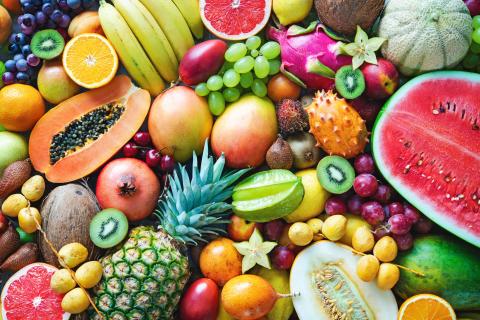
Chemotherapy is a powerful tool in cancer treatment, but certain chemotherapy drugs can affect kidney function, potentially leading to an increased risk of hyperkalemia (high potassium levels) due to tumor breakdown (tumor lysis syndrome). For patients dealing with this, following a low-potassium diet can help avoid complications and maintain overall health. Note that a low potassium diet typically contains less than 2,000mg total of potassium per day.
This post will guide you on which foods to avoid, which to include, and tips to manage your potassium intake while maintaining a high-protein diet.
High Potassium Foods to Avoid
If you're managing potassium intake, it's essential to know which foods are high in potassium. Here are some common foods to limit or avoid:
- Fruits: Avocado, bananas, cantaloupe, kiwi, mango, nectarines, oranges, papaya, pomegranates, and dried fruits (raisins, prunes).
- Vegetables: Potatoes (both white and sweet), tomatoes and tomato products, cooked spinach, beets, Brussels sprouts, and squash (butternut and acorn).
- Other Foods: Chocolate, nuts and seeds, peanut butter, molasses, milk, yogurt, and bran products.
Low Potassium Foods to Include
Fortunately, many delicious foods are naturally low in potassium. Here are some options to include in your diet:
- Fruits: Apples, blueberries, cherries, cranberries, grapes, peaches, pineapples, raspberries, strawberries, and watermelon (in limited amounts).
- Vegetables: Asparagus, green beans, raw broccoli, cabbage, cauliflower, cucumbers, kale, lettuce, onions, peppers, radishes, and zucchini.
- Other Foods: Bread (not whole grains), noodles, pasta, rice, and lean meats like chicken and fish in moderation.
Ways to Limit Potassium Levels
Managing potassium intake effectively can significantly impact your health. Here are some helpful strategies:
- Leach High-Potassium Vegetables:
- Peel and slice vegetables thinly.
- Soak them in warm water for at least two hours, changing the water every four hours.
- Rinse and cook in a large amount of water. This method helps reduce potassium content.
- Avoid Liquids from Canned Foods:
- When using canned fruits or vegetables, discard the liquid to reduce potassium levels.
- Limit Portion Sizes:
- Even low-potassium foods can contribute to high potassium levels if consumed in large amounts. Be mindful of portion sizes.
- Choose Low-Potassium Alternatives:
- Replace high-potassium ingredients in your recipes with lower-potassium options for a balanced diet.
Tips and Tricks
Here are some additional tips for managing your potassium levels while maintaining a high-protein diet:
- Read Labels: Always check food labels for potassium content, especially in processed or packaged foods.
- Cook at Home: Preparing meals at home allows you to control ingredients and portion sizes, making it easier to manage potassium intake.
- Stay Hydrated: Drinking plenty of water helps your kidneys filter out excess potassium.
- Track Your Intake: Keep a food diary to monitor your potassium intake and adjust your diet as needed.
By following a low-potassium, high-protein diet, you can help support your kidney health and reduce the risk of complications related to high-potassium and chemotherapy. If you have concerns or need guidance on creating a meal plan, consider consulting with a naturopathic doctor, registered dietitian or other healthcare provider.
Author Maha Ghannoum, Integrated Cancer Clinic Intern
Please note that the information provided in this blog post is for informational purposes only and should not be considered as medical advice. It is essential to consult with your healthcare provider or a qualified professional before making any healthcare decisions or taking any actions based on the information presented here.